CHARACTERISTICS:
Begonia Amphioxus is a native begonia species from Borneo surrounding regions of Sabah and Kalimantan. There are a lot being said about this iconic begonia and often considered rare, expensive and also elusive to care and cultivate them. I had personally killed this begonia twice before until getting the hang of it in getting the proper care and cultivation on this particular type of begonia.
I had noticed very similar characteristics with few other types of begonias especially the Borneo natives where they seemed to have a miniature features and fragile in appearance. These seemed to have almost similar identities and the plant care & characteristics are also similar.
Begonias which I like to mention: Begonia Borneensis which of the pink miniature flowers especially the begonia stem structure where it is fine and fragile and may easily break which require a lot of care.
According to Mark Tebbitt's book on begonias (quote) "It is easily identified by its wine-red stems and leaves with crinkled surfaces, that are glossy green above, with small, raised, pink dots and bronze-green to wine red beneath, and which have pinnately lobed, double-toothed margins."
Also similar with Begonia serratipetala is a native begonia species from Papua New Guinea. It behaves like a miniature shrub-like structure where the foliage are of dark bronze with pink spots on them. The leaves edges have fancy looking crest and folds where it appears to be serrated.
SPECIAL NOTE:
I had noticed that many websites give something of a similar Care Plant information and some almost contradicts the other. And often got confused which would be the best description to consider the right one to suit my garden and plant care.
As I had mentioned earlier, I had killed twice not figuring it out what exactly they may need and I would like to share my experience on what to do and not to do for this kind of begonias.
MEDIUM:
First and foremost - I always, always change the potting mix after purchasing these begonias from the nursery - usually I would keep the pot aside for few days for the medium to slowly dry out before repot.
Often 90% of the time, I would find these begonias are planted using cocopeat as medium and it would be entirely not suitable for lowland hot & dry with wet and humid lowland climate in my garden condition. Over watering would lead to root rot but lack of watering would turn the cocopeat to a dry husk and causing to begonia to dry out and die out of dehydration.
Hence - I always change my medium to suit my garden condition.
Do check out the post below for detailed information on
how I repot & what I use for the medium change:
PLANT PURCHASE:
I must stress on checking and inspecting the begonia condition before purchasing them.
Do not, I repeat purchase these begonias when you find a begonia sitting on a plant stand for weeks and that you find the plant appear to be sort of "spend" almost dropped off most of its leaves and just appearing with few miserable stem sticking out like a incense sticks.
Unless you are willing to take the chances of reviving the begonia, in most cases, the plant had already been stressed and already in downhill road to doom. That is if you find that discounted sale price is so tempting that you don't mind spending and trying out your luck in propagating the dying begonia.
Please understand that root rot often takes place where you may not able to inspect the plant unless you carefully remove all of the medium to check the plant health condition - and you can only do so once you had purchased the plant.
Hence the only way to do so is to buy fresh brought in plants from the main nursery or suppliers. Also inspecting to check vigorous new sprouts and growths to ensure a healthy robust plant.
Even to save a rotting begonia cutting is nearly impossible as the rotting bacteria and fungus had already infected the whole plant though the rot is only appearing at the bottom - it is more or less to late to do anything.
Based on my experience, I was never able to save any of the rotting begonia cuttings - what more a new beginner or novice.
OTHER FACTORS:
I also noticed that begonias hates changes in the weather conditions - they are very much love a standard routine environment conditions - that means, if the particular begonia is thriving in a very humid area in your garden and if you change the spot to a different place say more drier or wet or bright or shaded area - they will suddenly get stressed and may drop off all of it's leaves.
Hence they do not like stressed conditions.
Anything of any changes can stress them - hence always consider the boring same old routine for them. If you water your garden adequately in keeping your garden fresh and moist and missed out a few days, these begonias will get stress likewise if they are overwatered like 3 times a day when once a day is sufficient - they will rot away.
Again, my point is to bring the awareness that it is just not the humidity as humidity can encourage bacteria and fungus with root or stem rot - rather the well balance factor of equal sun to dry out the water when watered in the morning, adequate cool garden conditions where it is has nice humidity - not showering like a bathroom condition and not to dry like what you do for a drying clothes area.
Always I had noticed that begonias love company, snugged together with other plants in tight spaces. Somehow they love the shared contained surrounding with more plants together creating natural humidity than artificial humidity which can be very challenging indoors as you don't want to encourage mold or fungus growth on your walls.
CONCLUSION:
I had said a lot concerning these for now, however it only takes awhile to get it right and establish a system that works well in your garden condition. Once you get it right - you will able to replicate the same system for all of the rest of the begonias as their needs are almost the same.
There are indeed some are very fussy and difficult to care for, however the Canes and the Shrub types are very easy and the Plant Care are very much the same.
One thing though, if you are not confident - I urge you not to purchase any of the expensive premium begonias rather try and experiment with common and easy Cane Begonias first -try your hand and figure out what works best in each of the different location around your garden space and see whether they thrive or succumb to rot or stress.
There will always be on sweet spot in your garden that each and every begonia can thrive easily in those spaces - use that place as you Begonia Planting Spot.
DIFFERENT TYPES OF CANE BEGONIAS
Other matters are very much similar with the general information about Cane Begonias.
Do click below for more information on Cane Begonias.
Cane Begonia Care & Cultivation information.




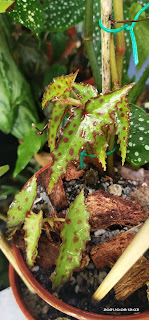


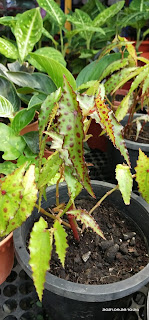


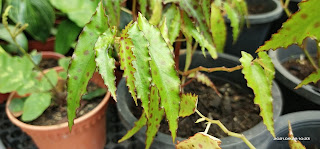
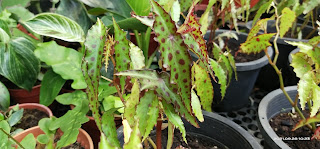
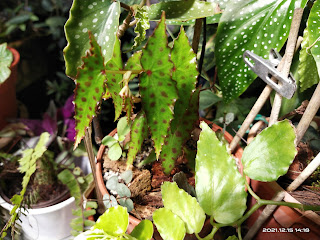














No comments:
Post a Comment